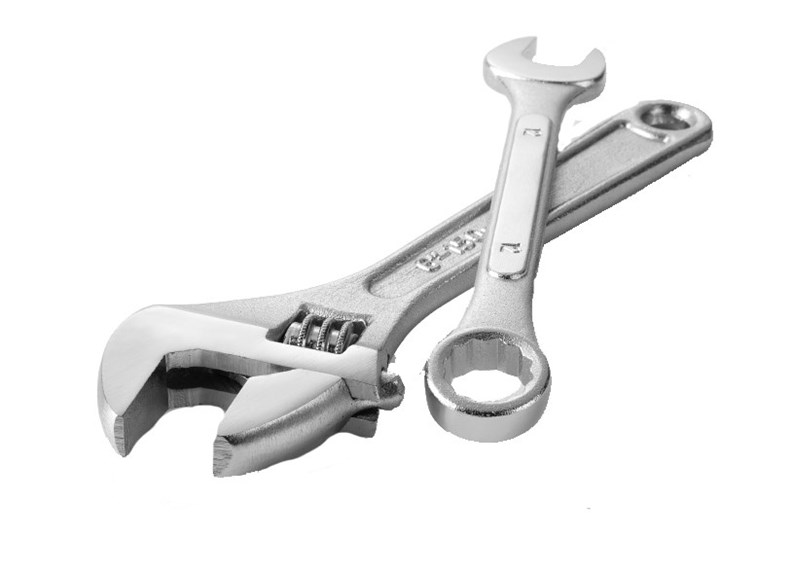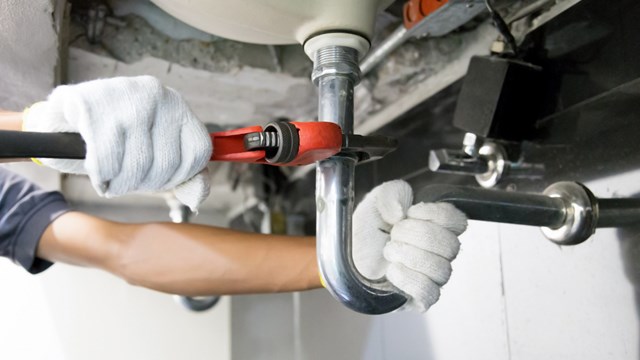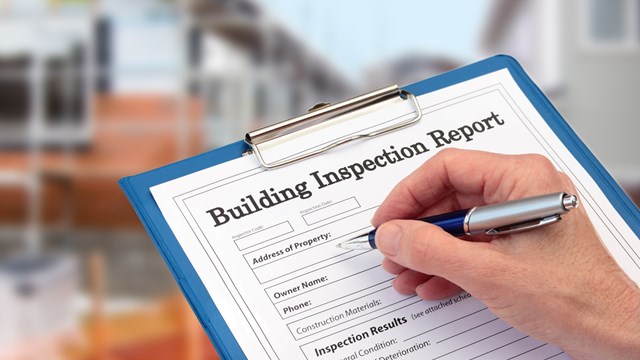Marble columns, iron grillwork, decorative cornices, brass details on doors; these are extra touches that make a building unique. When marble is polished and clean, ironwork and cornices free of rust, and brass buffed to an impeccable shine, the combined effect radiates charm and boosts your building's curb appeal. The city can be a hostile environment, however, with the combined forces of nature, pollution and everyday wear-and-tear wreaking havoc on these design elements. The origin and history of the building materials can provide insight into the best methods for maintenance and restoration.
Since the late 19th century, marble has been a popular choice for building façades. Marble is a metamorphic stone formed, as the name suggests, through change - either from the tectonic movement of earth masses, or through the heating of rocks by molten material called magna. Marble - the most popular metamorphic rock for architecture - is basically re-crystallized limestone. The stone takes on various appearances depending on the absence or presence of other materials in the formation. Darker marble contains more sediment and tends to be softer than lighter shades, which are generally more durable and better able to withstand the ravages of time.
By understanding that marble is created through a process of change, it follows logically that it does not stop changing simply because it becomes part of a building. According to "Historic Building Façades; The Manual for Maintenance and Rehabilitation" edited by William G. Foulks, there are five general causes of deterioration to stone. First is salt crystallization - the most common offenders being the salts in deicers and alkali cleaning products. Second is acid rain. Pollution in the air increases the acidity of normal rain, which then eats away at the mineral calcite in limestone and marble resulting in changes to the surface and loss of detail. Freezing water is the third factor. Since water expands when it freezes, it exerts pressure on the rock. The level of damage from freezing and thawing varies based on level of saturation. Related to freezing is simple wetting and drying which is more likely to affect the softest and most porous forms of stone. The last main category is biodeterioration or deposits and stains from algae, moss, birds and other animals.
When an expert is called in to assess damage to a building façade, the first step is to try to determine what was done to it in the past both by nature and by those who were trying to care for the stone, according to James Hunt, vice president at Port Morris Metal and Marble in the Bronx.
"Thirty to 40 years ago, they used caustic chemicals to clean the marble," says Hunt, adding that these chemicals often did more harm than good. "They also used sealants, which did not allow the stone to breathe and trapped water inside."
Other possible problems can result from poor workmanship when the stone was originally installed, leaving weak joints and susceptibility to water damage.
Some buildings have complete records of everything that has been done to the façade over the years, but others have no such records and experts need to make educated guesses about what has been used in the past. Repair to stonework can range from minor resurfacing, patchwork, or consolidation to major repairs to the anchoring systems or actual replacement of blocks. Buildings with landmark designation should check with the Landmarks Preservation Commission before starting any repair work. If it is determined that the stone is structurally sound, proper cleaning will not only restore its beauty but can also help to slow down the deterioration process.
"You have to be careful not to do further damage," says Hunt, referring to the various cleaning methods available. He adds that contractors will do test areas on the stone to see how it reacts. "You start out with the least aggressive methods - a neutral PH cleaner, for example - then progress. You don't want to assault the stone too radically."
For small areas, Hunt says dry cleaning methods - like applying baking soda with mild pressure - sometimes work well. This is a less aggressive method than sand blasting, but cleanup is difficult because of all the dust. As a last resort, abrasives can be used but this method tends to change the texture of the material.
Some stubborn stains, like graffiti, may be effectively removed by what's referred to as a "poultice process." Lina Gottesman of Altus Metal and Marble in Manhattan explains poultice by comparing it to a cosmetic facial mask.
"A type of clay coating is put over the surface, then covered with plastic for two to three days. The clays draw out the stain to the surface," says Gottesman.
By the mid-1800s, cast iron had become a popular choice for building façades because it was fire resistant, economical, and buildings could be erected quickly and efficiently using this material. Cast iron continued to be used well into the 20th century for decorative and structural purposes. Molded sheet metal was also used during this period for architectural elements including cornices, lintels, sills, and storefronts. The main problem with metal elements on building façades is oxidation - more commonly called rust. According to experts, the best way to protect metal elements is by keeping them painted. Prior to painting, the surface should be thoroughly cleaned of rust and old paint. Softer metals should be cleaned with chemicals or thermal methods, while harder metals may be mechanically cleaned.
The New York Landmarks Conservancy recommends inspection of metal work twice a year to identify rust spots, peeling paint and failed sealants. In their publication "Common Bond," the Conservancy advises keeping decorative ironwork in good condition by repairing it every three to four years with an application of high gloss alkyd paint. Fillers can be used to repair small cracks, while larger defects may require replacement. If iron is stripped to bare metal to restore detail, a high quality metal primer should be applied before painting.
Another common metal element on both older and more contemporary buildings is brass. Polished brass is often used on door kick plates and handles, nameplates and awning poles. Ron Oliver of Nulife Metal and Marble Restoration Systems says brass and bronze are especially vulnerable to oxidation and should be coated with a lacquer sealant to slow down tarnish.
But lacquer is also vulnerable. "Sun and elements will cause the lacquer to yellow and it can get worn off by touch," says Oliver. "At that point it should be stripped and refinished."
The frequency of refinishing depends on the amount of traffic and "the level of expectation," according to Oliver. Most marble and metal repair-and-restoration companies offer various maintenance packages to match a building's budget and expectations.
Gottesman says the coating and finishing processes require special skills and training and advises buildings to use contractors who are members of the Metal Trades Union, Local 8a-28a. Gottesman stresses the impact that well-maintained metal elements have on the image of a building.
"You never get a second chance to make a good first impression," she says.
Experts agree the best way for building staff to care for metal and marble elements on a daily basis is to rinse or wipe off surface dirt with plain water and a soft cloth. To remove surface dirt from carved areas on stone, a soft brush may be used. Occasionally, maintenance staff may dilute a few drops of mild dishwashing liquid in water to remove more stubborn dirt.
Many of the processes involved in the cleaning and restoration of metal and marble involve the use of chemicals. Buildings should ensure that contractors take all necessary measures to protect the safety of those doing the work, the general public, and the environment. A particular concern when dealing with painted metal is the fact that many older metal elements may have layers of lead paint. When working with painted metal, the Landmarks Conservancy warns, "Never allow maintenance personnel or contractors to remove lead paint without following current environmental and labor regulations."
Metal and marble accents make your building a one-of-a-kind home, but they require extra TLC to withstand the sometimes-harsh urban environment. With proper care and maintenance, your shiny Italian marble columns and ornate wrought-iron curlicues will last for another 100 years.







Leave a Comment